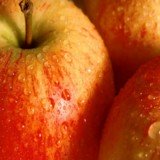Oranges Nutrition Facts
Oranges Nutrition Facts Skin and Analysis
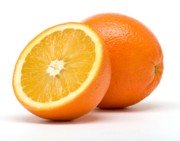 Oranges are one of the most popular citrus fruits that most of us will name off the top of our heads when asked for foods that contain Vitamin C. In fact, it is also said that orange is the third favorite flavor across the globe after chocolate which is first and vanilla the second.
Oranges are one of the most popular citrus fruits that most of us will name off the top of our heads when asked for foods that contain Vitamin C. In fact, it is also said that orange is the third favorite flavor across the globe after chocolate which is first and vanilla the second.
The history of oranges is that they were first mentioned around 2201 B.C. E. They also were once considered as a luxury among Italian nobility. Today, oranges are as common to all as bananas. There are many varieties of oranges, but the most popular are the sweet orange, the mandarin orange which is also referred to as a tangerine and the sour orange.
In 2005 the top five producers of oranges in the world were Brazil, USA, Mexico, India and China. The United States, however, is the leading citrus producing country in the world. It is known to produce the sweet orange variety. These include Valencia, Navel, Pineapple, Blood, Hamlin and Jaffa.
The sour range of oranges is known to be produced in Spain which is the sixth top producer of oranges in the world. Unlike many other fruits such as bananas and avocados, citrus fruits do not continue to ripen after being picked from the tree.
Oranges nutrition facts have shown that oranges, like all fruits and vegetables are loaded with minerals, nutrients and vitamins essential for the good health of our bodies. And like most fruits, oranges are low in calories and are cholesterol and saturated fats free.
Facts about oranges nutrition reveal that they are also rich in dietary fiber and pectin which is very effective in persons who are overweight or obese. Dietary fiber helps in digestion and lowering blood sugar levels. When one is considering eating healthy fruit nutrition and vegetable nutrition facts are important diet aspects to know.
In fact, what we would consider to be a key element and an essential building block to your leading a healthy eating lifestyle before anything else would be the knowledge of the food pyramid diagram. It will help you to understand how much of the different kinds of foods to include in your daily eating plan. As well as encourage you to eat a variety of foods which our bodies need.
Now, back to oranges nutrition facts. Oranges contain Vitamins A, B1 (Thiamin), B2 (Riboflavin), B3 (Niacin), B5 (Panthothenic Acid), B6, B9 (Folate) and C, Calcium, Potassium, Magnesium, Phosphorus, Zinc, Dietary Fiber and Iron. Vitamin C, as discussed in strawberry nutrition facts and banana nutrition facts helps the body to fight off illnesses as well as keeping the immune system healthy amongst many other things.
You may follow the above links on strawberry and banana nutrition facts to learn more about the health benefits we get from Vitamin C. Folate, also referred to as folic acid is important for the growth development for young children and babies still in the womb. So in order to avoid some birth defects such as spina bifida, expecting mothers need to include foods high in folate in their pregnancy diet.
Oranges nutrition facts have also shown us that oranges contain antioxidants which amongst many other benefits help fight aging, cancer and other diseases. These antioxidants are, as mentioned above, Vitamin A and Vitamin C. Oranges are placed in the orange/yellow color fruits and vegetables group, obviously.

The fruits and vegetables in this color group help to maintain healthy vision, a healthy heart and a healthy immune system. This is because of the natural plant pigments called carotenoids.
Other examples of fruits in this group include papayas, pineapple, pears, sweet corn, pumpkin, mangoes, lemons, carrots and nectarines.
Nutrition facts on oranges allow them to be used in many different ways. One of the most popular is serving them as orange juice. Another is using them in jams/ marmalade and jellies as well as perfumes. Seville oranges are popular in the making of marmalade. Some manufacturers use Valencia oranges as well. Dried orange leaves and blossoms may be used as herbal tea. The orange peel can be used in the preparation of popular dishes and cakes because of its rich flavor.
The most common form in we eat oranges is in juice form. Orange juice has become one of the most popular breakfast juices across the globe. It however is best to have freshly squeezed orange juice which will not have any artificial sweeteners. In America forty percent of the oranges are used to make orange frozen orange juice concentrate.
Freshly Squeezed Orange Juice Nutrition Facts: 100ml- Calories- 45
- Calories from Fat- 2
- Total Fat- 0g
- Sodium- 1mg, 0% of RDA
- Total Carbohydrate- 10g, 3% of RDA
- Dietary Fiber- 1% of RDA
- Sugars- 8g
- Protein- 1g
- Vitamin A- 4%of RDA
- Vitamin C- 83% of RDA
- Calcium and Iron- 1% each of RDA
- Vitamin B1- 6% of RDA
- Vitamins B2, B3, B5 and B6- 2% each of RDA
- Folate- 8% of RDA
- Magnesium- 3% of RDA
- Potassium- 6% of RDA
- Phosphorus- 2% of RDA
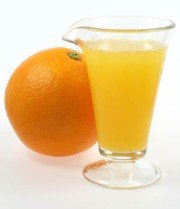
Mandarin, Navel, Blood, Valencia and Clementine Oranges Nutrition Facts
The kinnow mandarin oranges are a variety of mandarin oranges and are cultivated in Pakistan. They are part of the mandarin or tangerine orange group.
Note: The Recommended Daily Allowance (RDA)Percentages in this article are based on a 2,000 calorie diet. This therefore means that your daily values may be higher or lower depending on your calorie needs.
Nutritional information: 1 medium kinnow mandarin orange (84 g)
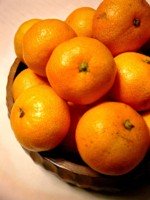
- Calories- 37
- Calories from Fat- 1
- Total Fat 0.2g
- Cholesterol- 0mg
- Sodium- 1mg
- Total Carbohydrates- 9.4g
- Dietary Fiber- 1.9g
- Sugars- 7.5g
- Protein- 0.5g
- Vitamin A- 11%
- Vitamin C- 43%
- Calcium- 1%
- Iron- 0%
As mentioned earlier navel oranges are part of the sweet oranges. They are the most popular oranges that are eaten across the globe. Navel oranges are named so because the bottom looks like a navel also referred to as a bellybutton. It is believed that the bigger the "navel" in an orange, the more sweeter it will be.
Navel Oranges Nutrition Facts: 100grams
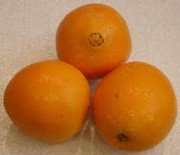
- Calories- 49
- Calories from Fat- 1
- Total Fat- 0g
- Sodium- 1mg
- Total Carbohydrates- 13g, 4% of RDA
- Dietary Fiber- 2g, 9% of RDA
- Sugars- 8g
- Protein- 1g
- Vitamin A- 5% of RDA
- Vitamin C- 99% of RDA
- Calcium- 4% of RDA
- Iron- 1% of RDA
- Vitamin B6- 4%
- Vitamin B5- 3%
- Folate (Vitamin B9)- 8%
- Vitamin B3- 2%
- Vitamin B2- 3%
- Vitamin B1- 5%
- Potassium- 5%
Blood oranges are also part of the sweet oranges group. The red coloration is due to the natural plant pigments in the flesh and peel known as anthocyanins. Which are the same pigments found in most of the red fruits and vegetables.
Nutritional information: 1 medium blood orange (131g)
- Calories- 62
- Total Fat- 0.2g
- Sodium- 0mg
- Total Carbohydrate- 15.4g
- Sugars- 12.2g
- Dietary Fiber- 3.1g
- Protein- 1.2g
- Vitamin A- 6%
- Calcium- 5%
- Vitamin C- 116%
- Iron- 1%
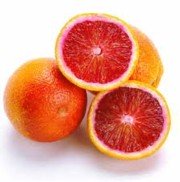
The Valencia orange is also part of the sweet oranges. It has a hint of green on its peel. It's name was derived from a city in Spain called Valencia. This city has a history and is well known for its sweet orange trees. The Valencia oranges are primarily grown for processing and orange juice production.
Valencia Oranges Nutrition Facts, 100g:
- Calories- 50
- Total Carbohydrates- 12.0g, 4% of RDA
- Dietary Fiber- 3.0g, 12% of RDA
- Sugars- 9.0g
- Protein- 1.0g
- Vitamin A- 4% of RDA
- Vitamin C- 80% of RDA
- Calcium- 4% of RDA
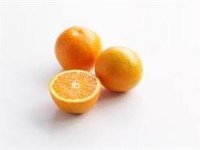
Clementine oranges are a cross between a Chinese mandarin and a sweet orange. They are very sweet, do not have any seeds and are small in size. In fact, they are the tiniest of the mandarins. These qualities that they possess make them popular with kids.
When considering oranges and their nutrition you'll find that they are great to add as healthy snacks for kids in their diet, even adults too. It's more than apparent after reading this that oranges are a healthy snack, they are a fruit after all. And fruits are a must in our diets. Clementine oranges are produced mainly from Morocco and other parts of North Africa and Spain. Calorie breakdown is as follows; Carbohydrates- 92%, Fat- 3% and Protein- 5%
100g clementine oranges nutrition facts:
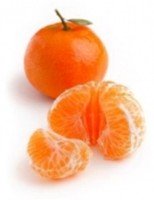
- Calories- 47
- Calories from Fat- 1
- Total Fat- 0.15g
- Saturated fat- 0g
- Cholesterol- 0g
- Sodium- 1mg
- Potassium- 177mg
- Total Carbohydrate- 12.02g, 4% of RDA
- Dietary Fiber- 1.7g, 7% of RDA
- Sugars- 9.18g
- Protein- 0.85g
- Vitamin C- 81% of RDA
- Calcium- 3% of RDA
- Iron- 1% of RDA
Oranges Nutrition Facts In Summary
The oranges nutrition facts that we have discussed in this article are as follows:
- Facts about oranges nutrition show us that they contain the following minerals, vitamins and nutrients Vitamins A, B and C, Magnesium, Potassium, Phosphorus, Calcium, Iron and Dietary Fiber.
- Looking at oranges analysis, we can see that because of their makeup, they help in preventing lung cancer, birth defects, kidney stones, rheumatoid arthritis and many other diseases.
- It is believed that eating oranges makes your skin glow. This is derived from the fact that oranges contain vitamin A.
- Oranges nutrition facts have shown that oranges contain the antioxidants Vitamin A and Vitamin C.
- Orange is the third favorite flavor in the world after chocolate and vanilla which are first and second, respectively.
- Nutrition facts on oranges show us that they are cholesterol, trans fat and saturated fat free. So this also means they are low in calories.
- Oranges nutrition facts have shown us that oranges are a good source of dietary fiber which is especially important for digestion as well as for those who are overweight.
- An orange is also another fruit that one should add to their diet if they want to lose weight, together with bananas and strawberries.
- Oranges, like all fruits and vegetables are whole foods which are essential for a well balanced healthy diet.
- One of the most popular ways in which oranges are consumed is in the form of orange juice. And on that note, if you can squeeze your own juice, the better. It will be nice and fresh and way healthier than the canned or artificially sweetened one.
- There are three main types of oranges. The sweet, mandarin or tangerine and the sour. The United States produces mainly the sweet oranges which are Blood, Navel, Valencia, Jaffa, Pineapple and Hamlin. The sour oranges are mainly produced in Spain.
- The world's top 5 producers of oranges in their order are Brazil, USA, Mexico, India and China. Spain in the 6th top producer.
So this article has given you more than one reason why you should include oranges in your diet. Go ahead and enjoy the benefits when you begin to reap them.

